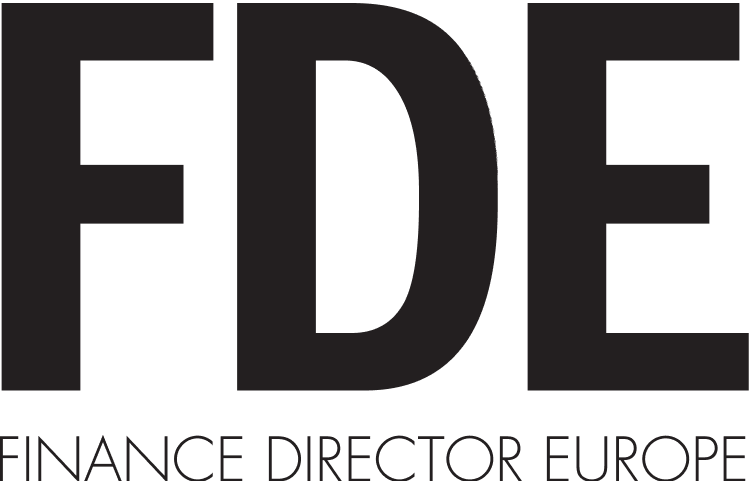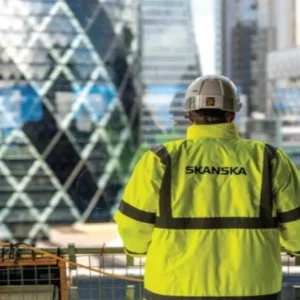
In the search for talent, sifting through CVs is the first step in narrowing the field of candidates before the real work begins. At interview, much depends on first impressions, and how well a candidate can build a rapport with potential employers. Human interaction, with all of the inefficiencies and biases that engenders, is the key. But what if technology could provide a fairer, more effective and cost-efficient way of hiring people?
That is the question being asked by a rapidly growing number of companies – and an army of technology providers is queuing up to answer it. In 2020, a survey by global investment research company Mercer found that 55% of US companies are already using some degree of predictive analytics in their human resources (HR) processes. Some market-leading brands have gone much further, choosing platforms powered by artificial intelligence (AI) to select and screen candidates.
Unilever, Vodafone and US telecoms giant Lumen Technologies are working with HireVue, which has developed an AI-based platform to extract data from video interviews. The system is ultimately helping Unilever whittle down the 100,000 graduates that apply each year for just 1,000 positions. Hiretual, another platform, is used by technology companies like Intel and IBM, while Sony and Hallmark are working with AI and predictive analytics engine Entelo. Microsoft, Lyft, Uber and WeWork, for their part, use WOO’s anonymous job discovery platform for the tech industry.
“Recruitment technology is a vast field, but we have specifically focused on on-demand video interviewing, assessments, chatbot and scheduling automation technology,” says Kevin Parker, CEO of HireVue. “Our trademark on-demand interviews, gamification and AI technologies provide recruiters with the ability to access significantly more job candidates every hour of the day with consistency and speed throughout the hiring process.”
For the finance director, the prospect of saving both money and time, while HR hires from a better pool of candidates, is a win-win situation. With the Covid-19 pandemic making cost control measures essential, it is hard to argue against the adoption of AI-based solutions to ensure that a business has the right talent to recover from the impact of lockdown.
“Our trademark on-demand interviews, gamification and AI technologies provide recruiters with the ability to access significantly more job candidates every hour of the day.”
Kevin Parker
“Delivering interviews any hour of the day and any day of the week significantly reduces time constraints for hiring teams, minimising the time between advertising a vacancy and successfully hiring,” says Parker. “This ensures that organisations are reaching more applicants and hiring the best, most skilled candidates.”
Tooling up
More complicated than deciding whether or not to use AI recruiting platforms is understanding where best to deploy them. There are many essential steps in the hiring process, and AI can deliver value at every stage.
One key area is the sourcing of candidates. Tools have been developed that can reach out to potential candidates and match applicants against criteria specified by the employers. AI’s power lies in its ability to seek patterns in vast amounts of data, which is ideally suited to pre-employment assessment tools, matching candidates’ critical competencies to a company’s specific needs.

Once potential candidates have been identified, cognitive chatbots can spring into action. Using AI, machine learning (ML) and natural language processing (NLP), they can engage conversationally with candidates to automate the application workflow through text, web, and social media channels – making the application process more efficient and, ultimately, improving the whole experience for both recruiters and applicants.
“Our AI-driven chatbot solution enables talent acquisition teams to have engaging, personalised conversations with millions of active job-seekers any time of day or night on the devices they prefer, responding to questions and guiding them through the process in real time,” says Parker. “Incorporating AI and chat-based solutions provides candidates with regular, useful updates, helping organisations avoid the long-term reputational consequences of a poor hiring process.”
In the current economic climate, with fewer jobs and more candidates for each position, HR teams are stretched. Streamlining and automating connections with candidates and, eventually, the interview process can bring a significant competitive advantage in identifying better candidates faster.
“One of the major benefits of using on-demand video and AI technology is the convenience that it offers to candidates,” Parker says. “The need to attend in-person interviews during the traditional workday is prohibitive to securing a new role, especially for hourly workers. With on-demand video interviews, candidates can participate at a time and in a location that feels most comfortable. This flexibility helps candidate access and performance, and unlocks a huge range of roles that were previously inaccessible.”
Another key benefit AI promises is the ability to remove bias from the interview process. A dispassionate technology platform may not have the unconscious biases that humans might, so it can, in theory, make data-driven recommendations without discrimination.
“Like with any pre-hire assessment, it is necessary to thoroughly evaluate and test the outputs of any AI that makes talent screening suggestions,” says Parker. “On the rare occasion that any adverse impact is identified, models can be rebuilt to ensure that result is eliminated. If an adverse impact is present, the data which led to that biased result can be de-weighted or removed.”
Voices of dissent
Though AI evangelists abound, there are those who feel less than comfortable with its current role in recruitment. Among them is Alex Engler, AI data and democracy fellow at the Brookings Institution in Washington DC, who studies the implications of AI and emerging data technologies on society and governance. He is far from a luddite, but he does have concerns about the proliferation of algorithms across the hiring process, particularly when it comes to NLP, facial expression analysis and bias.
“AI is completely unsuited for most interpersonal tasks,” he believes. “For instance, it does not really understand human language, despite sometimes appearing to. We know that AI models that transcribe speech to text can be less accurate for minorities, and people with accents or regional dialects. We also know that natural language models – whether learned on proprietary datasets or the internet – can exhibit many biases, for instance against women and people with disabilities.”
What Engler is calling for is balance – exploiting what AI does well while accepting its failings. “AI might be able to find meaningful patterns in interview answers or résumés, though it would be best to use relatively simple and interpretable AI models, and then have a person check to ensure they are sensible and fair heuristics,” he explains. “Since AI does not really understand these answers, and is only making correlations, we should use this approach sparingly.”
Parker accepts this, noting that HireVue carries out rigorous testing for bias related to age, gender, or ethnicity throughout the process, and re-trains and re-tests its models. He has also shown a willingness to respond to concerns about the most controversial aspects of AI recruitment tools – facial expression analysis.
With more people working remotely – a trend sharply accelerated by the pandemic but undoubtedly here to stay – video interviews are more common than ever. Amid the upheaval, some recruiters sensed the potential for AI technology to analyse a candidate’s facial expressions and body language to assess personality traits.
The backlash was swift. In 2019, the AI Now Institute published a paper calling for facial analysis in recruitment to be banned on the basis that emotional states indicated by facial expressions might be the result of many factors that an AI engine has no way of exploring.
“There is no compelling evidence that facial analysis can consistently reveal information about someone’s emotional condition, nor do I think it’s possible to tell anything meaningful about their personality or intellect,” says Engler.
Having initially included facial analysis as part of its platform, HireVue later removed that capability.
“The goal of HireVue’s assessment models is to correlate an applicant’s interview to how they would perform in a specific role,” Parker says. “Our own research concluded that for the significant majority of jobs, the predictive power of language has increased greatly, and our algorithms do not see significant additional predictive power when additional visual data is added.”
“This is definitely progress,” believes Engler. “Many people, myself included, are working to help the public understand the limits of AI. Facial analysis for job interviews is a clear example of a task that modern AI simply cannot do, and it can only possibly be unfairly disadvantaging people.”
Finding equilibrium
Engler believes we are a long way away from meaningful AI analysis of a video job interview, not least because of the frightening amount of data such a process would require.
“Even if it were possible, to do that would entail so much data collection I’m not sure that’s a world I want to live in,” he emphasises. “How we use AI affects how we incentivise data collection – saying it’s OK to use AI for something inherently creates an enormous demand for data about that thing, which can be quite dangerous.”
Though limited in scope, AI-enabled platforms can nevertheless reduce human workloads and speed up the hiring process, which is obviously appealing for many businesses. They will undoubtedly play a central role in helping recruiters match candidates with opportunities suited to their individual skills and experience.
55%
The percentage of companies in the US using predictive analytics in HR in 2020, compared to 52% in Germany and only 18% in China.
Mercer
“AI might be able to find meaningful patterns in interview answers or résumés, though it would be best to use relatively simple and interpretable AI models.”
Alex Engler
90%
The decrease in time to hire that HireVue clients benefit from, a 16% increase in new hire diversity, and a 131% return on investment.
HireVue
Thanks to AI, candidates will be able to minimise the time spent applying for multiple roles, and recruiters will more quickly identify a better pool of candidates. It is essential, however, that both groups understand where AI is effective and where it fails – and that it is not a suitable alternative in every case.
AI has its limitations and platform developers such as HireVue have shown themselves willing to recognise where their technology adds value and where it does not. Before investing in AI, recruiters should know precisely what they need the technology to do – and should make sure a human hand is steering the process of talent acquisition.






